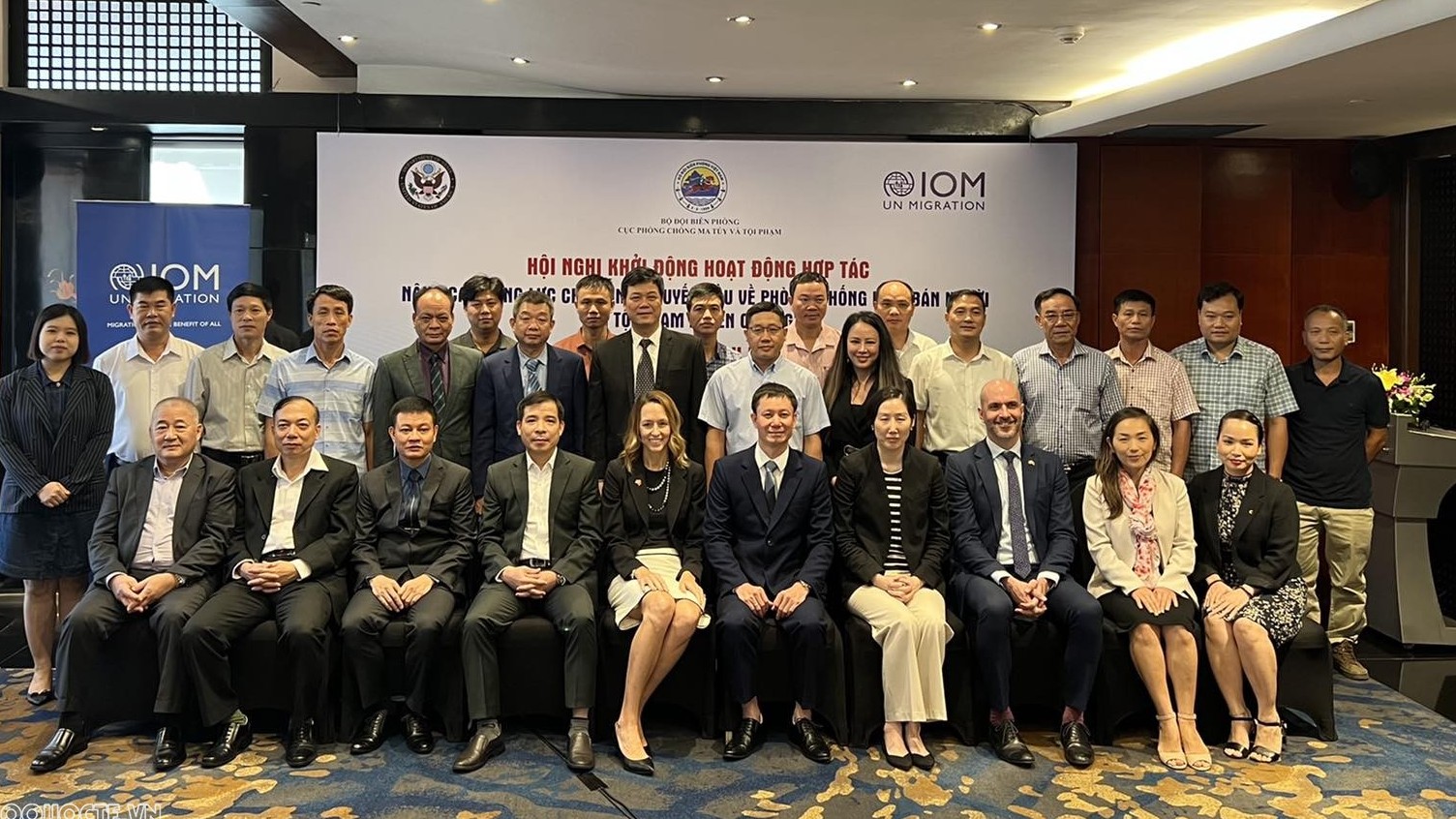The results of the Population Change and Family Planning Survey on April 1, 2022 by the General Statistics Office show that the largest migration flow in our country is from urban to urban areas, accounting for 44.6% of the total migration flows in the country.
At the Migration and Health of Internal Migrants Conference organized by the Department of Population, Ministry of Health on September 24, Mr. Le Thanh Dung, Director of the Department of Population, said that Vietnam's current population is 100.3 million people, of which the urban population accounts for 38.13%.
 |
| Mr. Le Thanh Dung spoke at the Workshop. |
Vietnam is in the golden population structure period with 67.7 million people of working age, accounting for 67.4% of the total population. The process of urbanization, industrialization, modernization and a large working age population has brought many great advantages to the country's socio-economic development and certainly has a great impact on migration flows in Vietnam.
The results of the Population Change and Family Planning Survey on April 1, 2022 by the General Statistics Office show that the largest migration flow in our country is from urban to urban areas, accounting for 44.6% of the total migration flows in the country.
The regions with the highest out-migration rates are the Mekong Delta and the Northern Midlands and Mountains. The regions attracting the most migrants are the Southeast and the Red River Delta.
Provinces with high emigration rates include: Lang Son, Soc Trang, Tra Vinh, Ca Mau, Bac Lieu. Provinces and cities with high immigration rates include: Bac Ninh, Binh Duong, Da Nang, Ho Chi Minh City, Thua Thien Hue, Long An.
The proportion of migrants in the 20-24 age group is highest for both men and women. This is followed by those in the 25-29 and 15-19 age groups. The main reasons for migration are employment (54.5%), family/house move (15.5%), and education (16%).
The feminization of migration has been observed over the years. In 2022, female migrants accounted for 53.2%. The proportion of female migrants was higher than that of male migrants in most migration streams, except for the rural and urban migration streams, where the proportion of male migrants was 3.4 percentage points higher than that of female migrants.
Regarding the health of migrants, the results of the 2015 National Internal Migration Survey showed that 60% of migrants surveyed said their current health was normal, two-thirds (70.2%) had health insurance. The majority of migrants (63%) paid for their most recent illness/disease themselves; over 70% of migrants used public health services.
The rate of contraceptive use among migrant women (37.7%) is lower than that of non-migrants (58.6%). The rate of alcohol use among migrants is higher than that among non-migrants. These habits are not only harmful to health but also unsuitable for the working environment.
The 2019 report on the health status of migrants in Vietnam by the International Organization for Migration, the World Health Organization (WHO) and the Ministry of Health also pointed out barriers and difficulties related to accessing health care services such as lack of knowledge about health insurance benefits, lack of communication programs on public health, participation of parties...
In addition, domestic and international studies have shown that migrants are the most vulnerable population group, especially in public health emergencies (the recent Covid-19 pandemic is an example).
Migrants face many problems such as movement restrictions, reduced wages, job loss, risks, delays and disruptions in health care…
Migration brings opportunities for education, employment, income, technology transfer, cultural exchange, and promotes cooperation between the place of origin and destination.
Migration is inevitable and a driving force of development. However, migration also creates difficulties and challenges for both the place of origin and the place of destination; migrants belong to vulnerable population groups and face difficulties and challenges in accessing social services.
At the workshop, Mr. Le Thanh Dung, Director of the Department of Population (Ministry of Health), Member of the National Steering Committee for Population and Development, said that migration is inevitable and a driving force for development. Migration brings opportunities for education, employment, income, technology transfer, cultural exchange, and promotes cooperation between the place of origin and destination.
“However, migration also creates difficulties and challenges for both the place of origin and the place of destination. Migrants belong to a vulnerable population group and face difficulties and challenges in accessing social services,” Mr. Le Thanh Dung analyzed.
According to Mr. Vu Dinh Huy, representative of the World Health Organization (WHO) in Vietnam, internal migrants currently face many health problems. For the informal migrant group, it is often more difficult because living conditions, working conditions, working hours, and jobs are often not controlled.
On the other hand, the lifestyle trends of this migrant group are often unhealthy such as: drinking alcohol, smoking, eating unhygienic food; high risk of contracting infectious diseases and non-communicable diseases.
“The ability to use medical services of this migrant group is limited due to the lack of health insurance cards, or due to other social factors such as long working hours that prevent them from going to the doctor, lack of family support, low income…”, said Mr. Vu Dinh Huy.
Referring to solutions to support the health of internal migrants, Mr. Vu Dinh Huy said that it is necessary to have measures to provide health knowledge such as guidebooks, strengthen communication and education; strengthen the health care - social network, such as creating conditions for housing, education, hygiene, health insurance regime, etc.
At the same time, develop policies and regulations on labor safety, working conditions, primary health care facilities at the company, conduct periodic health check-ups, etc.
Source: https://baodautu.vn/rao-can-cham-soc-suc-khoe-voi-nguoi-di-cu-d225726.html




































Comment (0)